
The first USS Blue Ridge (ID-2432) was a steamship in the United States Navy. The ship was named for the Blue Ridge Mountains.
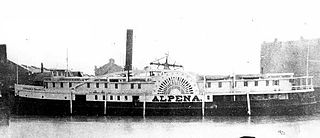
The PS Alpena was a sidewheel steamer built by Thomas Arnold of Gallagher & Company at Marine City, Michigan in 1866. She was operated by the Goodrich Line after being purchased from Gardner, Ward & Gallagher in April 1868. The Alpena sank in Lake Michigan in the "Big Blow" storm on October 15, 1880, with the loss of all on board.
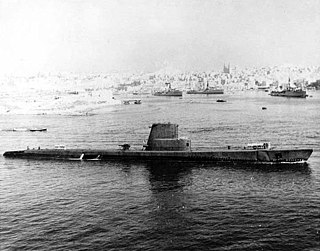
USS Lizardfish (SS-373), a Balao-class submarine, was a boat of the United States Navy named for the lizardfish, a slender marine fish having a scaly, lizard-like head and large mouth.

USS Hawkbill (SS-366), a Balao-class submarine, was the first ship of the United States Navy to be named for the hawksbill, a large sea turtle.

Lake freighters, or lakers, are bulk carrier vessels that ply the Great Lakes of North America. These vessels are traditionally called boats, although classified as ships.

SS Chief Wawatam was a coal-fired train ferry and icebreaker that operated in the Straits of Mackinac between 1911–1984. Her home port was St. Ignace, Michigan, and she shuttled back and forth during her entire working life between that port and Mackinaw City, Michigan.
North American was a Great Lakes steamship built by the Great Lakes Engineering Works at Ecorse, Michigan, in 1913 for the Chicago, Duluth & Georgian Bay Transit Company. The vessel was launched on January 16, 1913, and was the older of two near-sister ships, the newer one being SS South American.

SS City of Midland 41 was a train ferry serving the ports of Ludington, Michigan, Milwaukee, Wisconsin, Manitowoc, Wisconsin, and Kewaunee, Wisconsin, for the Pere Marquette Railway and its successor, the Chesapeake and Ohio Railway from 1941 until 1988. The ferry was named after the city of Midland, Michigan.
The Georgian Bay Line is the popular name of the Chicago, Duluth and Georgian Bay Transit Company. From 1913 until 1967, the Georgian Bay Line (GBL) provided transit service and cruise voyages to passengers on North America's Great Lakes.

The SS Christopher Columbus was an American excursion liner on the Great Lakes, in service between 1893 and 1933. She was the only whaleback ship ever built for passenger service. The ship was designed by Alexander McDougall, the developer and promoter of the whaleback design.
Detroit and Cleveland Navigation Company, often abbreviated as D&C, was a shipping company on the Great Lakes.

Steamer South American was a Great Lakes steamer built by the Great Lakes Engineering Works at Ecorse, Michigan. It was built in 1913/14 for the Chicago, Duluth & Georgian Bay Transit Company. The vessel was launched on February 21, 1914 and was the newer of two near-sister ships, the older one being the North American.
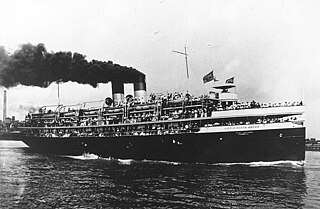
USS City of South Haven (ID-2527) was a transport ship for the United States Navy at the close of World War I. Before the war, she was a passenger steamship that sailed as SS City of South Haven on the Great Lakes. In post-war civilian service she operated as SS City of Miami between Florida and Cuba before returning to the Great Lakes as SS E.G. Crosby. She was scrapped in 1942 following a fire.

Due to its unique geography, being made of two peninsulas surrounded by the Great Lakes, Michigan has depended on many ferries for connections to transport people, vehicles and trade. The most famous modern ferries are those which carry people and goods across the Straits of Mackinac to the car-free Mackinac Island but before the Mackinac Bridge was built, large numbers of ferries carried people and cars between the two peninsulas. Other ferries continue to provide transportation to small islands and across the Detroit River to Canada. Ferries once provided transport to island parks for city dwellers. The state's only national park, Isle Royale cannot be reached by road and is normally accessed by ferry. The largest ferries in Michigan are the car ferries which cross Lake Michigan to Wisconsin. One of these, the SS Badger is one of the last remaining coal steamers on the Great Lakes and serves as a section of US Highway 10 (US 10). The Badger is also the largest ferry in Michigan, capable of carrying 600 passengers and 180 autos.

Howard M. Hanna Jr. was a 500 ft (150 m) Great Lakes freighter that had a lengthy, 75-year career on the Great Lakes of Canada and America. Hanna was a product of the Cleveland Shipbuilding Company of Cleveland, Ohio. The ship was commissioned by the Richardson Transportation Company to haul iron ore, coal and grain. She had a cargo capacity of 9,200 tons of bulk cargo, or 323,000 bushels of grain.
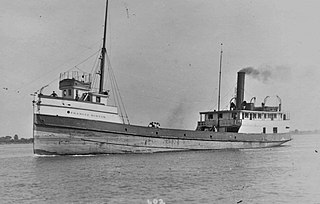
The SS Francis Hinton was a wooden-hulled steam barge that sank in a gale off the coast of Manitowoc, Wisconsin, on Lake Michigan in 1909 while heavily laden with a cargo of lumber. On December 16, 1996, the wreck of the Francis Hinton was listed on the National Register of Historic Places.

SS S.C. Baldwin was a wooden-hulled steam barge built in 1871, that capsized in a storm on August 26, 1908, on Lake Michigan, off Two Rivers, Wisconsin, United States, with the loss of one life. On August 22, 2016 the remnants of S.C. Baldwin were listed in the National Register of Historic Places as reference number 16000565.
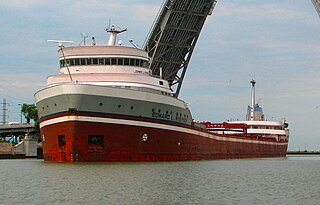
SS Edward L. Ryerson is a steel-hulled American Great Lakes freighter built in 1960. Throughout her career on the Great Lakes, she has been laid up multiple times. Ever since 2009, she has been in long term layup at the Fraser Shipyard in Superior, Wisconsin. Currently, she is one of only two American owned straight deck lake freighters, the other one being 1958-built freighter John Sherwin.

SS Vernon was a wooden-hulled American passenger and package freighter that sank in a Lake Michigan storm on October 29, 1887, near Two Rivers, Wisconsin, with the loss of between 36 and 50 lives, making her one of the deadliest shipwrecks ever to have occurred in Wisconsin. Only one of the people on board survived.















